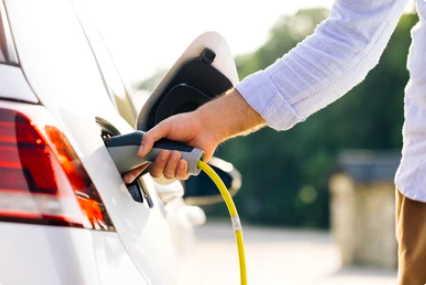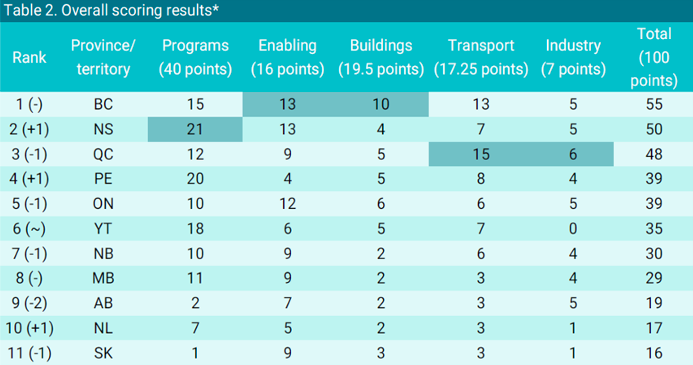The Future of Energy Efficiency in Canada
Energy efficiency, in its various forms, is an essential feature of the net zero carbon world that is required to address our climate emergency. Peter Love, President at Love Energy Consultants, highlights the ten most important initiatives that are needed to realize the full potential of energy efficiency.
Let’s start with a few key facts to set the context. 83% of Canada’s anthropogenic Greenhouse Gas (GHG) emissions come from the production of use of energy; thus, the importance of focussing on energy1. We currently lose about 60% of that energy in conversion; so, the potential for efficiency is huge2. And the source of Canada’s GHG emissions varies greatly by province due mainly to differences in industry, ways electricity is generated and climate; thus, opportunities and challenges are different for each province.

It is also important to clarify what energy efficiency entails. There are six major categories: conservation behaviour (using existing technology), systems operations (conservation behaviour for larger buildings), new technology (think LED lights), demand response (changing when electricity is used), fuel substitution (electricity replacing natural gas or gasoline) and on-site generation (small solar/wind)3.
The following are the ten most important initiatives that are needed to realize the full potential of energy efficiency:
- Electrification – As noted above, fuel substitution is one of categories of energy efficiency and is critical to reach net zero carbon. Heat pumps and EVs will need to replace the fossil fuels currently used for buildings and vehicles. As part of this solution, the electricity used needs to be carbon free.
- Make Saving/Converting Easy – The transition to using less energy and electrification must be made easy. Concierge services, one-stop full services, low energy default setting are part of this.
- Equity/Social Justice – Special provisions must be made to assist families and organizations with limited financial resources to be part of the solution. Likewise, support is needed for employees to assist them with transitioning from fossil fuel related employment.
- Carbon Pricing – The current Canadian policy of pricing carbon sends a clear price signal that encourages all forms of energy efficiency.
- Rate-Payer Funded Incentive Programs – Most provinces currently require their regulated natural gas and electricity utilities to have rate-payer funded incentive programs to encourage energy efficiency; these need to be expanded.
- Time of Use Electricity Rates – Most provinces have this for their larger customers, and some have it for all their customers. This is especially important for encouraging demand response which can reduce the peak demands made on the electricity system.
- Codes and Standards – Easily forgotten, mandatory minimum energy efficiency codes and standards continue to play a critical role in reducing energy demand. Energy planners love tis approach as it is something they can rely on with complete confidence.
- Existing Buildings – While it is obviously important that new buildings be built to emit zero net carbon, it is even more important and difficult to retrofit existing ones. This is because about 70% of the buildings in 2050 have probably already been built.
- Transportation – Next to the oil and gas industry, this is the largest source of GHG in Canada, representing 24% nationally. As noted above, due to provincial differences, it represents 41% and 37% of emissions in Quebec and BC, respectively1.
- Culture of Conservation – Last but by no means least is the need to move to a conserver society. The need to move to a conserver society was first identified in a 1973 report by the Science Council of Canada and was repeated more recently by the Canadian Council of Chief Executives, composed of 150 CEOs of the largest companies in Canada.

It is tempting to say that all these activities should be led by governments with businesses playing their part by providing the required products/services and individuals playing their part by buying those products/services with the lowest carbon impact. In fact, a recent report by the International Energy Agency (IEA) concluded that consumer behaviour choices and low carbon technologies which require active involvement of consumers make up almost 2/3 of the energy savings needed to reach Net Zero Emissions by 20504.
Every Canadian has three critical roles:
- As a Voter – To ensure their elected governments will take the lead in ensuring that these 10 initiatives are top priorities and receive the funding required.
- As a Consumer – To do their best to identify and preferentially buy the products and services which have the lowest carbon impact.
- As an Energy User – To constantly look for ways that they can adjust their activities to reduce the carbon emissions associated with these activities.
References
- And Sinks in Canada: Executive Summary 2022”. Environment and Climate Change Canada, Ottawa, 2022.
- Canadian Energy Systems Analysis Research. www.cesarnet.ca . University of Calgary, Calgary, 2018.
- Love, Peter: Fundamentals of Energy Efficiency: Policies, Programs and Best Practices – Second Edition. Love Energy Consultants Inc., Toronto, 2022.
- International energy Agency. “net Zero by 205 – A Roadmap for the Global Energy Sector”. IEA, Paris, 2021.














